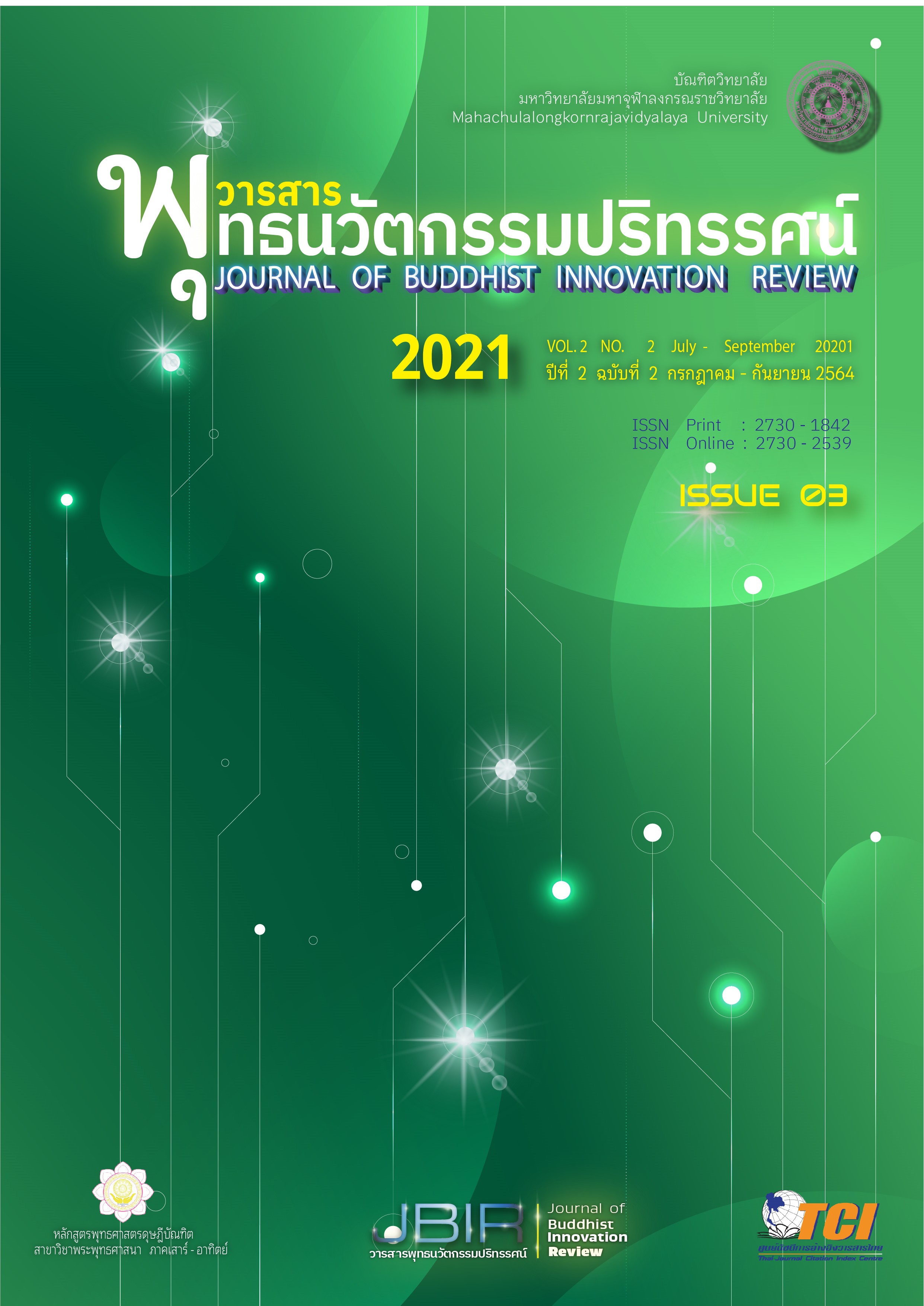Debt Management in Society: The Buddhism Point of View
Main Article Content
Abstract
Increasing the buying power of consumer and expand customer base for seller are the usefulness of debt, but at the same time it also causes the side effect of debt issue at individual and household level. Theravada Buddhism doesn’t totally reject the concept of debt. The concept “Debt is the cause of suffering in human life” is only mean “Informal debt” that arrange between people outside of banking system. Buddhism provide concept Diṭṭhadhammikattha-saṃvattnika-dhamma (Virtues leading to present welfare) to avoid debt, from income side, we can use Uṭṭhānasampadā (Achievement of diligence) to increase income and Ārakkhasampadā (Achievement of protection) to prevent loss of income. From expense side, we can use Kanlyāṇamittataā (Associate with good people), Samajīvitā (Living economically) and Apāyamukha (Causes of ruin).
Article Details

This work is licensed under a Creative Commons Attribution-NonCommercial-NoDerivatives 4.0 International License.
เรื่องลิขสิทธิ์/เป็นความคิดเห็นของผู้เขียน
References
เอกสารอ้างอิง
หนังสือ
ธนิต อยู่โพธิ์. (2494). ภาวะเศรษฐกิจสมัยพุทธกาล. พิมพ์ในงานฌาปนกิจศพ นายเพิ่ม อยู่โพธิ์. กรุงเทพมหานคร.
มหาจุฬาลงกรณราชวิทยาลัย. (2539). พระไตรปิฎกภาษาไทย ฉบับมหาจุฬาลงกรณราชวิทยาลัย. กรุงเทพมหานคร: โรงพิมพ์มหาจุฬาลงกรณราชวิทยาลัย.
พสิษฐ์ โชติวัฒนะกุล. (2557). เอกสารการประชุมเชิงปฏิบัติการแปลงนโยบายและยุทธศาสตร์การพัฒนาสถาบันครอบครัว พ.ศ. 2557-2564 สู่การปฏิบัติ. กรุงเทพมหานคร: ธนาคารแห่งประเทศไทย.
รัชนีกร วงศ์จันทร์. (2555) การบริหารการเงินส่วนบุคคล. พิมพ์ครั้งที่ 2. กรุงเทพมหานคร: ตลาดหลักทรัพย์แห่งประเทศไทย.
สื่ออิเล็กทรอนิกส์
ขวัญชนก วุฒิกุล, แยกหนี้ครัวเรือนตามอาชีพ ใครรุ่ง-ใครร่วง. [ออน์ไลน์]. แหล่งที่มา: https://businesstoday.com. (วันที่สืบค้น 9 เมษายน 2563)
หนังสือภาษาต่างประเทศ
David Graeber. (2011). Debt The First 5,000 Years. New York: Melville House Printing. Kapoor, J. R., Dlabay, L. R. and Hughes, R. J. (2004). Personal Finance. 7th edition. New York: McGraw-Hill/Irwin.
MD. Aquique. (1974). Economic History of Mithila (C.600 B.C.-1907 A.D.). New Delhi: Abhinva Publications.
S.A.Q Husaini. (1962). The Economic History of India, Volume 1 (from the earliest times to the formation of feudalism). Calcutta: Eastern Publishers.


